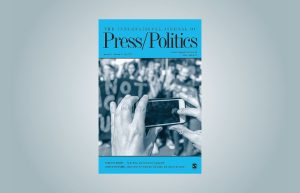 Leonie Wunderlich, Dr. Sascha Hölig und Prof. em. Dr. Uwe Hasebrink schreiben in ihrem Beitrag im International Journal for Press/Politics über journalistische und nicht-journalistische Quellen im Nachrichtenkonsum junger Menschen.
Leonie Wunderlich, Dr. Sascha Hölig und Prof. em. Dr. Uwe Hasebrink schreiben in ihrem Beitrag im International Journal for Press/Politics über journalistische und nicht-journalistische Quellen im Nachrichtenkonsum junger Menschen.
Der Artikel basiert auf im Rahmen des #UseTheNews-Projekts erhobenen Daten.
Abstract
In today’s hybrid media environment new content creators challenge the status of professionally produced journalism and blur the lines between professional and non-professional content. Growing up in this information landscape, younger generations have developed news-related practices and attitudes that lie in stark contrast to those of previous generations. In addition, discrepancies exist between news definitions and the use practices of young people. We conducted focus groups with German adolescents (15–17 years), young adults (18–24 years) and adults (40–53 years) in August 2020 to uncover young peoples’ orientation toward news and journalism. Our study indicates that the boundaries of what journalism is and what it is not are becoming increasingly indistinct. However, distinctions do emerge between the journalistic and non-journalistic sources that adolescents and young adults use and the functions they associate with them according to their information needs. Differences between the age groups become apparent in their motivations to stay informed which highlights the important role non-journalistic sources play in information behaviour and opinion formation. For teenage participants especially, Social Media Influencers (SMIs) are relevant within these processes, which are linked to a perceived social duty-to-keep-informed. Moreover, findings from the focus groups highlight cohort-specific differences regarding the understanding of journalism and, consequently, differences in the assessment of trust and reliability as well as the verification strategies that are applied. In sum, for young participants journalism is a reliable source of information, especially in the case of current events and for crosschecking online information, while non-journalistic sources fulfil social needs.
Wunderlich, L.; Hölig, S.; Hasebrink, U. (2022) Does Journalism Still Matter? The Role of Journalistic and non-Journalistic Sources in Young Peoples’ News Related Practices. In: The International Journal of Press/Politics. DOI: https://doi.org/10.1177/19401612211072547

